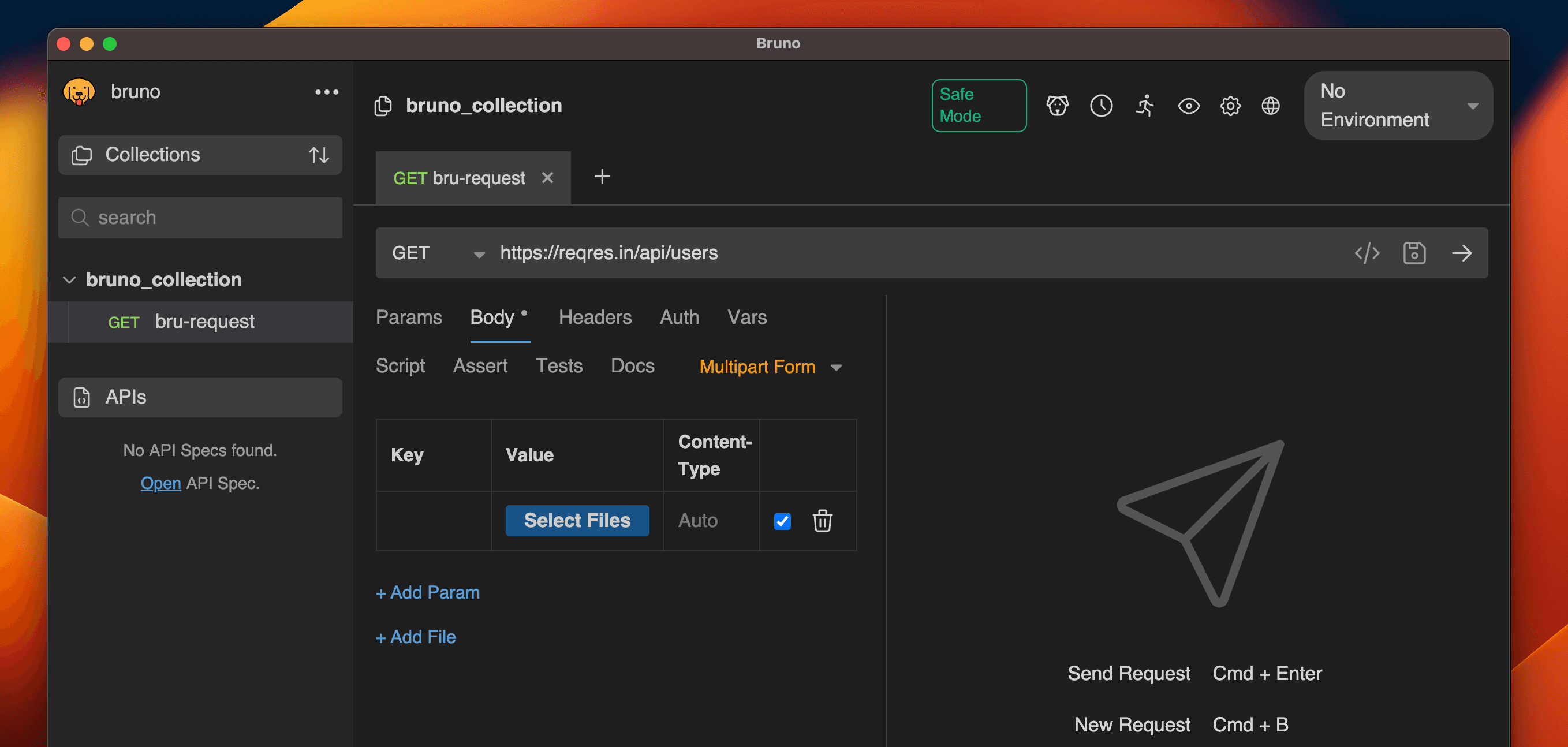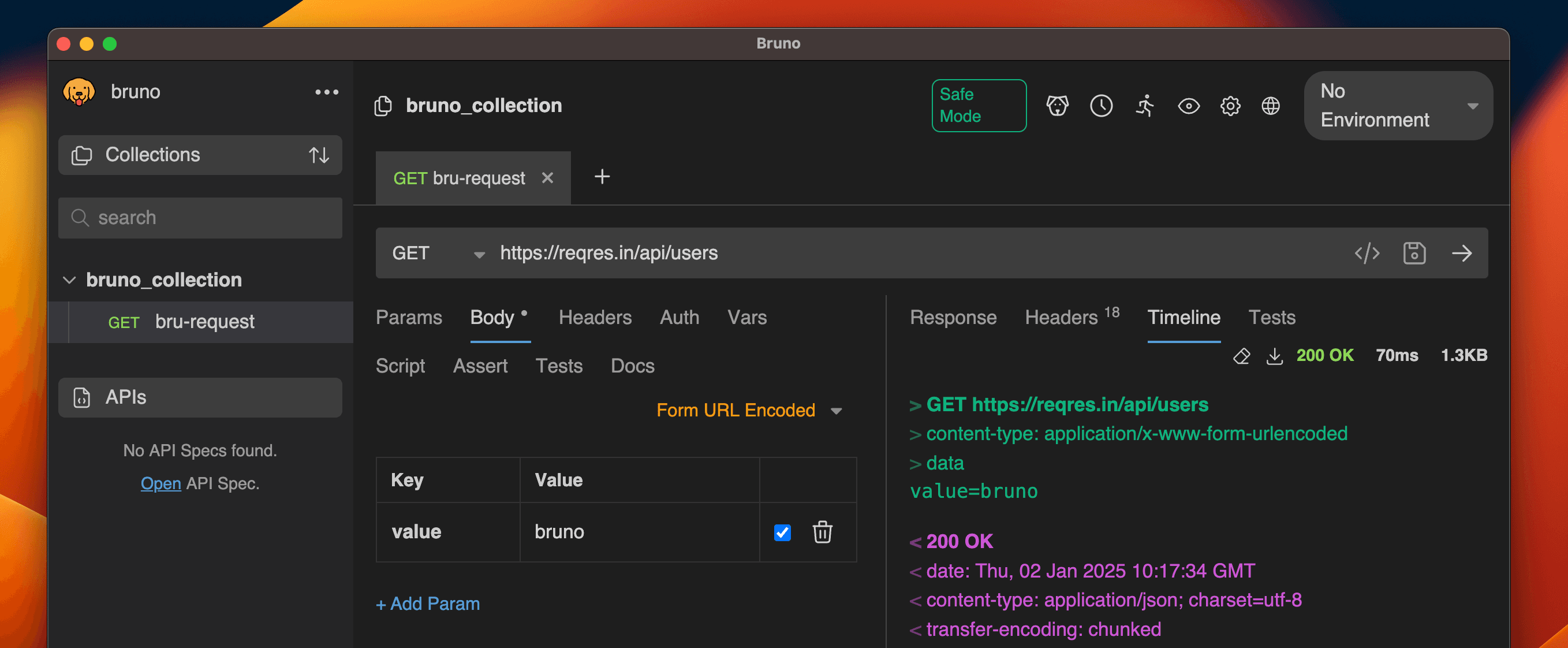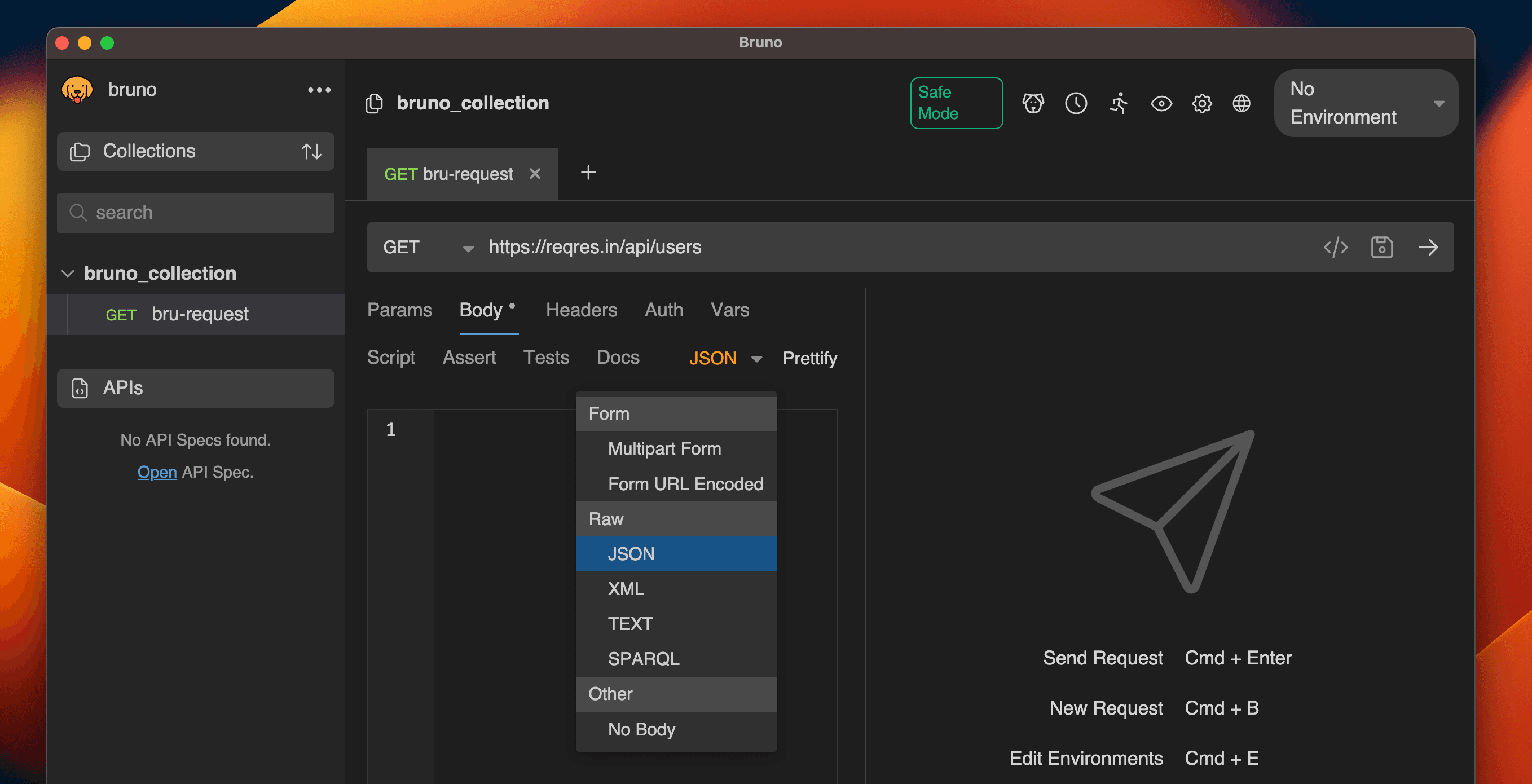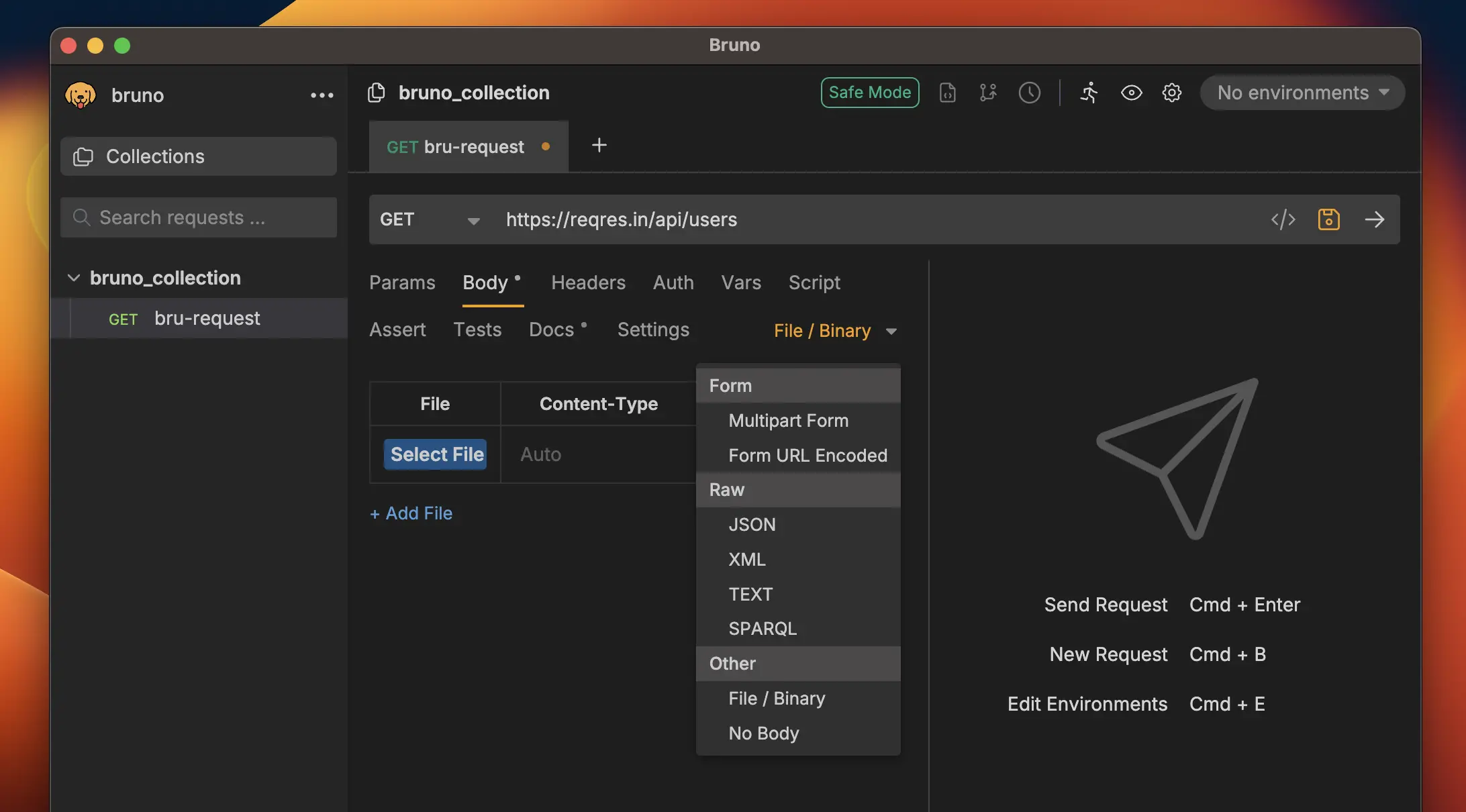Body Data
The Body tab in Bruno allows you to send specific data with your API requests. You can choose from various data formats, such as Form, Raw, and others, using the dropdown menu.
Send Body Data with API Requests
You can select the data type based on your API request requirements. For example, if you’re working with a request where you need to send specific details about a particular item, you’ll likely choose JSON as the data type and include the data in the body of the request.
Form-Data
1. Multipart Form
Used for sending files along with form data, allowing multiple parts with different content types in a single request. In multipart form data, each part of the request is separated by a boundary.
- Navigate to the Body tab.
- Select Multipart Form from dropdown.
- Click on Add File and upload your file.
- (optional) You can also select Add Param for sending key-value pair data.
- Save and execute the request.

2. URL Encoded
It is commonly used for simple form submissions where data is sent as key-value pairs. Each key and value are separated by an equal sign (=), and multiple pairs are separated by an ampersand (&).
- Navigate to the Body tab.
- Select Form URL Encoded from dropdown.
- Click on Add Param and add key-value pair.
- Save and execute the request.

Raw Data
Raw Data allows you to send data in its raw, unprocessed form in the body of an API request. It doesn’t require a predefined structure like key-value pairs or multi-part boundaries. Instead, you can send data exactly as it is, which is useful when dealing with structured data formats such as JSON, XML, Sparql or plain text.
- Navigate to the Body tab.
- In the RAW section, select your preferred data format.
- Add appropriate data for your API request.
- Save and execute the request.

Other (File / Binary / No Body)
The Other option on the Body tab provides quick choices to send a file or to send no body.
- Navigate to the Body tab.
- From the dropdown, choose Other.
- Two controls are available:
- File / Binary: Send a file directly as the request body. Click Select File (or drag-and-drop) to pick the file. Bruno sends the file as-is (Content-Type will be inferred or set it in Headers).
- No Body: Send the request with an empty body (useful for requests that require no payload).
- (optional) Verify the Content-Type header if your server expects a specific media type for the uploaded file.
- Save and execute the request.
